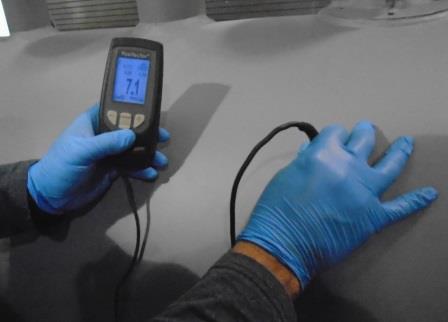Coating Inspection
The coating inspection article explains about the chloride test, surface profile measurements, wet and dry film thickness measurement, etc.
SSPC-SP1 Solvent Cleaning is an essential requirement and it is done before surface preparations such as SSPC-SP 10/NACE No. 2 near-white blast cleaning or SSPC-SP 5/NACE No. 1 white metal blast cleaning.
The I4I Academy's API source inspection course addresses coating testing and inspection. The I4I Academy's API 571 Damage Mechanisms Affecting Fixed Equipment in the Refining Industry addresses corrosion and failures that can happen by coating and lining failures.
Chloride Testing / Bresle Patch Method - The most of the coating specification requires that chloride testing ( Bresle Bresle patch Method) being performed before sandblasting. The soluble salt remains in metal surface even after sandblasting and can not be removed easily and cause paint failure through osmotic action and moisture absorption (formation of HCL acid) and cause metal corrosion beneath coating and finally cause paint breakdown.

Air Compressor Blotter Test Based is performed to identify oil and water contamination on the air compressor. The Test is conducted as per requirements of ASTM D 4285.
Coating Inspection - Surface Cleaning Types
SSPC-SP3 Power Tool Cleaning is frequently used when contamination to adjacent areas is a concern by sandblasting or is not feasible.
SSPC-SP 5 White Metal Blast Cleaning (NACE No. 1) is to be used to clean unpainted or painted steel surfaces prior to applying high-performance protective coating or lining systems. SSPC-SP 5/NACE No. 1 removes all visible oil, grease, dust, dirt, mill scale, rust, coating, oxides, corrosion products, and any other foreign matter on the surface.
SSPC-SP 10 Near-White Metal Blast Cleaning (NACE No. 2) is to be used to clean unpainted or painted steel surfaces prior to applying a new protective coating or lining systems. SSPC-SP 10/NACE No. 2 removes all dust, coating, and mill scale. The limit of staining permitted for near-white metal blast cleaning is no more than five percent of each unit area of the surface. This subject is one of the important items in coating inspection process. This is the most applicable cleaning level on industry and is an important item on coating inspection.
SSPC-SP 6 Commercial Blast Cleaning removes all visible oil, grease, dust, dirt, mill scale, rust, coating, oxides, corrosion products, and any other foreign matter on the surface but allows up to 33% stains or shadows remain of each unit area of the surface.
SSPC-SP 7 Brush off Blast Cleaning allows for a great amount of the original coating to remain on the surface and to roughen the surface prior to applying the new coating system. SSPC-SP 7/NACE No. 4 removes all visible oil, grease, dust, dirt, as well as loose mill scale but tightly adherent mill scale, rust, and the coating may remain.
Surface Profile Measurement by Replica Tape (Press-O-Film or testex tape) is performed after sandblasting to make sure the sandblasted surface has the required profile as indicated in the customer coating specification.
Surface Dust Test is performed after air blowing on the blast-cleaned surface and is done based on procedure outlined on ISO 8502-3 to ensure all dust and grit being removed from the surface.
Paint Dry Film Thickness Measurement is addressed on SSPC-PA 2 and provides information to how to average the readings and determine DFT acceptability.
Coating Specification article provides you a sample paint specification that applicable both for shop and site.
Painting Inspection and test plan provide a sample ITP for painting inspection hold, witness and review points.
Free newsletter!
Sign up to receive my monthly newsletter covering all the latest courses and updates.




New! Comments
Have your say about what you just read! Leave me a comment in the box below.